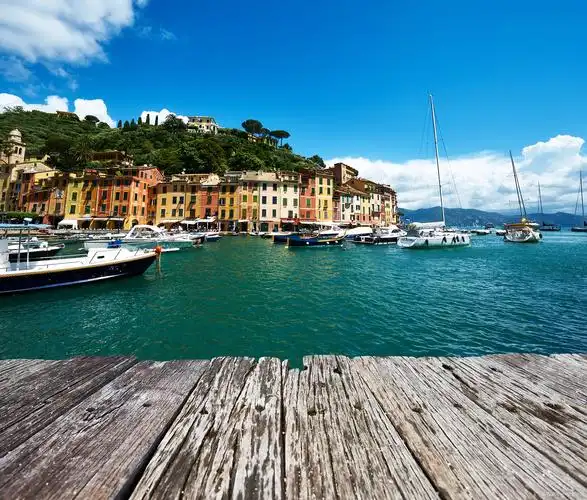Global Travel Information
Gobi Desert, Mongolia/China
The Gobi Desert: A Land of Extremes and Mysteries
Stretching across vast expanses of northern China and southern Mongolia, the Gobi Desert is one of the most enigmatic and awe-inspiring landscapes on Earth. Unlike the stereotypical image of endless sand dunes, the Gobi is a diverse and dynamic region, characterized by rocky plateaus, gravel plains, and sparse vegetation. Covering approximately 1.3 million square kilometers, it is the fifth-largest desert in the world and one of the most extreme environments, where temperatures can swing from scorching highs in summer to bone-chilling lows in winter.
A Harsh Yet Beautiful Landscape
The Gobi’s terrain is as varied as it is unforgiving. While parts of the desert feature towering sand dunes—such as the iconic Khongoryn Els in Mongolia—much of the region consists of rocky outcrops, dry riverbeds, and salt flats. The desert’s name, "Gobi," derives from the Mongolian word for "waterless place," a fitting description for a land where rainfall is scarce and unpredictable.

Despite its arid reputation, the Gobi is not entirely lifeless. Hardy shrubs, grasses, and even wildflowers bloom briefly after rare rains, sustaining a surprising array of wildlife. The desert is home to elusive creatures like the snow leopard, the Bactrian camel (a two-humped species uniquely adapted to desert life), and the Gobi bear, one of the rarest bears on Earth.
A Land of Extremes
The Gobi is notorious for its extreme climate. Summers can bring blistering heat, with temperatures soaring above 40°C (104°F), while winters plunge to -40°C (-40°F) or lower. The desert’s continental climate is influenced by its distance from the ocean and its high elevation—some parts of the Gobi lie over 1,500 meters (4,900 feet) above sea level.
Adding to its harshness are the fierce winds that sweep across the plains, creating massive dust storms. These winds have sculpted the landscape over millennia, carving out dramatic rock formations like the Flaming Cliffs (Bayanzag), famous for their red-orange glow at sunset.
A Treasure Trove of Fossils and History
The Gobi Desert is a paleontologist’s dream. Its exposed rock layers have yielded some of the most significant dinosaur fossils ever discovered, including the first known dinosaur eggs. The Flaming Cliffs, explored by American paleontologist Roy Chapman Andrews in the 1920s, remain one of the most important dinosaur fossil sites in the world.
Beyond its prehistoric wonders, the Gobi has played a crucial role in human history. It was a crossroads for the ancient Silk Road, where caravans of traders, monks, and adventurers braved the harsh conditions to transport goods between China and the West. The ruins of ancient cities and Buddhist monasteries still dot the landscape, silent witnesses to the region’s storied past.
Nomadic Life in the Gobi
For centuries, the Gobi has been home to nomadic herders who have adapted to its challenges. Mongolian herders, in particular, rely on their herds of goats, sheep, and camels, moving seasonally in search of pasture. Their traditional gers (yurts) provide portable shelter against the elements, and their deep knowledge of the land allows them to thrive where few others could survive.
However, modernization and climate change threaten this way of life. Overgrazing, mining, and desertification are pressing concerns, as the fragile ecosystem struggles to cope with increasing human activity.
The Gobi’s Modern Challenges
In recent decades, the Gobi has become a focal point for economic development. Mongolia’s mining boom, driven by vast deposits of coal, copper, and gold, has brought wealth but also environmental degradation. China, too, has expanded infrastructure projects, including roads and railways, to tap into the region’s resources.
At the same time, conservation efforts are underway to protect the Gobi’s unique wildlife and landscapes. National parks like the Great Gobi Strictly Protected Area in Mongolia provide sanctuary for endangered species, while eco-tourism offers a sustainable way to experience the desert’s beauty.
Conclusion: A Desert of Wonders
The Gobi Desert is a place of stark contrasts—brutal yet breathtaking, barren yet teeming with life. Its vastness holds secrets of Earth’s distant past and challenges for its future. Whether through the lens of a scientist, a historian, or an adventurer, the Gobi remains one of the planet’s most captivating and mysterious landscapes.
For those who dare to explore it, the Gobi offers not just a journey across a desert, but a voyage through time itself.
相关文章
- Elbe River Archaeological Sites: Ancient Finds Near the Water
- Elbe River Botanical Gardens: Flowers & Plants Along the Banks
- Elbe River Zoos & Aquariums: Family Fun Near the River
- Elbe River Amusement Parks: Rides with River Views
- Elbe River Camping Spots: Pitch a Tent by the Water
- Elbe River Glamping Sites: Luxury Camping Along the Banks
- Elbe River RV Parks: Stay in Your Camper Near the River
- Elbe River B&Bs: Cozy Accommodations with a Personal Touch
- Elbe River Hostels: Budget Stays for Young Travelers
- Elbe River Business Travel Guide: Meetings & Events Near the Water
发表评论
评论列表
- 这篇文章还没有收到评论,赶紧来抢沙发吧~


